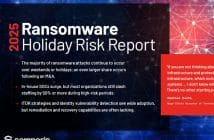
Sumsub has released For Fake’s Sake, a set of models that enable the detection of deepfakes and synthetic fraud in visual assets.
This is the first solution of its kind to be developed by a verification provider, that is publicly accessible for download and usage.
With this release, Sumsub aims to provide the AI community – including developers, AI researchers and scientists – with a platform that they test and experiment on, and explore innovative ways to tackle the escalating threat of deepfakes.
Expanding its expertise beyond product development, Sumsub’s in-house AI/ML Research Lab developed For Fake’s Sake, a set of four distinct machine learning-driven models for deepfake and synthetic fraud detection.
Through For Fake’s Sake, users will be able to estimate how likely an uploaded image was created artificially. Following the guidelines established by the AI community, Sumsub provides detailed cards – comprehensive documentation that describes the datasets and performance metrics of their AI models.

Sumsub’s internal testing indicates that its AI models are effective in accurately detecting typical image alterations.
Moreover, when these models are used alongside alternative methods of content analysis, AI-generated images can be more confidently recognized.
According to Sumsub’s most recent internal data, the first half of 2023 saw a huge rise in deepfake cases worldwide, as compared to the second half of 2022.
The most striking surge in the number of AI-generated identity fraud cases was noticed in Asia-Pacific (APAC) countries such as Australia (1300%), Vietnam (1400%), and Japan (2300%).
Similarly, the number of deepfakes increased by 84% in Great Britain, by 250% in the U.S., by more than 300% in Germany and Italy, and 500% in France.
“We’ve dedicated substantial efforts to combat the menace of deepfakes and the adverse impacts of synthetic fraud by constantly upgrading our existing solutions and developing new features, including the newly enhanced deepfake detector of our liveness tool,” comments Vyacheslav Zholudev, co-founder and CTO of Sumsub. “Offering top-quality products to customers is one thing. But it is equally vital we commit to maintaining a transparent public discourse on the multifaceted threats posed by deepfakes, from impersonation of real individuals online, theft of personal data, the dissemination of misinformation, social engineering, and more. Our open-source tool represents just one of the many strides Sumsub is taking, apart from product development, towards fulfilling our mission of empowering a safe and inclusive digital future – for companies and the wider public’s free use alike.”
Following this initial contribution, Sumsub will leverage feedback from the AI-research community to further improve the models’ capabilities, allowing the platform to adapt and grow in tandem with other AI-driven tools.
“As AI technologies advance, we foresee a tightening of regulations governing their use. For example, it may soon become mandatory to apply watermarks to all synthetic images. However, fraudsters will continually seek ways to overcome regulations, especially leading up to the 2024 U.S. presidential elections,” explains Pavel Goldman-Kalaydin, Head of AI/ML at Sumsub. “We’re pleased to share our experimental synthetic image detection models as a benchmark for further development in the battle against AI-generated fraud. We must remain vigilant and unite our efforts as an industry, and our team is committed to continued development based on the latest trends, user feedback, and community insights.”





